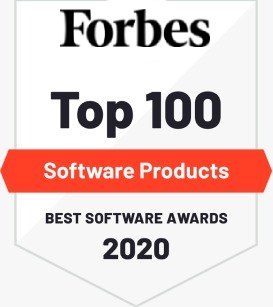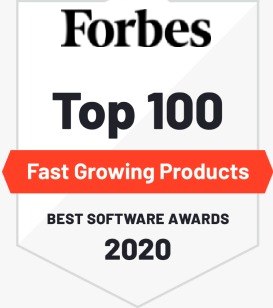Section 1 : Welcome! Course Introduction
|
|
Lecture 1 | What does the course cover | 00:03:35 Duration |
|
|
Lecture 2 | Download all course materials |
Section 2 : The ascendance of investment banking services
|
|
Lecture 1 | The importance of history, name, tradition, and reputation | 00:02:29 Duration |
|
|
Lecture 2 | Early origins of investment banking services | 00:05:56 Duration |
|
|
Lecture 3 | What is the difference between commercial and investment banking | 00:02:11 Duration |
|
|
Lecture 4 | Why do universal banks have a competitive advantage | 00:03:26 Duration |
|
|
Lecture 5 | Intrinsic conflicts of interest and the role of Chinese walls | 00:02:59 Duration |
|
|
Lecture 6 | Historical M&A waves | 00:05:34 Duration |
|
|
Lecture 7 | Three of the most important IPOs in history | 00:04:47 Duration |
Section 3 : The four main areas of investment banking activity
|
|
Lecture 1 | Capital markets – raising equity and debt capital | 00:07:22 Duration |
|
|
Lecture 2 | Advisory – M&A and Restructuring services | 00:07:27 Duration |
|
|
Lecture 3 | Trading and Brokerage – trading with financial securities | 00:03:10 Duration |
|
|
Lecture 4 | Asset management – the ability to use money to make more money | 00:04:03 Duration |
Section 4 : Strategies pursued by investment banks
|
|
Lecture 1 | Strategies pursued by investment banks | 00:04:01 Duration |
|
|
Lecture 2 | Relationship vs transaction-based banking | 00:04:44 Duration |
|
|
Lecture 3 | The accidental investment banker - Book recommendation | 00:01:01 Duration |
Section 5 : Capital markets – Equity capital markets
|
|
Lecture 1 | Why would a company want to go public | 00:02:52 Duration |
|
|
Lecture 2 | Who are the investors in an IPO | 00:03:05 Duration |
|
|
Lecture 3 | Coming up with a share price | 00:03:50 Duration |
|
|
Lecture 4 | What does an IPO timetable look like | 00:03:53 Duration |
|
|
Lecture 5 | The IPO syndicate – members and responsibilities | 00:03:09 Duration |
|
|
Lecture 6 | The pricing process | 00:04:46 Duration |
|
|
Lecture 7 | Fee distribution among investment banks | 00:04:10 Duration |
|
|
Lecture 8 | Allocating shares to investors – who gets what | 00:04:31 Duration |
|
|
Lecture 9 | Taking a long and short position with respect to a security (definition) | 00:03:01 Duration |
|
|
Lecture 10 | Post-IPO stabilization Applying the Greenshoe option | 00:05:06 Duration |
|
|
Lecture 11 | Greenshoe explained – Practical example | |
|
|
Lecture 12 | Other ways to place equity capital – SEOs and private placements | 00:01:32 Duration |
|
|
Lecture 13 | Facebook's IPO - Case study | 00:05:35 Duration |
|
|
Lecture 14 | Course Challenge #1 - IPO | 00:00:43 Duration |
Section 6 : Capital Markets – Debt Capital Markets
|
|
Lecture 1 | The four different types of bonds | 00:02:41 Duration |
|
|
Lecture 2 | Why issue a bond | 00:03:52 Duration |
|
|
Lecture 3 | The mechanics of a bond offering | 00:03:58 Duration |
|
|
Lecture 4 | A particular type of bonds - Junk bonds | 00:02:57 Duration |
|
|
Lecture 5 | What is securitization and why can it be useful | 00:03:21 Duration |
|
|
Lecture 6 | Securitization - explained | |
|
|
Lecture 7 | Asset-backed securities An example of securitization | 00:05:03 Duration |
|
|
Lecture 8 | Loan syndication – a preferred instrument for most banks nowadays | 00:02:33 Duration |
|
|
Lecture 9 | Project finance | 00:05:46 Duration |
|
|
Lecture 10 | Course challenge #2 - Debt offerings | 00:00:42 Duration |
Section 7 : Advisory services – Mergers and acquisitions
|
|
Lecture 1 | Why acquire another company | 00:05:34 Duration |
|
|
Lecture 2 | Describing the typical deal lifecycles and buyer companies | 00:03:16 Duration |
|
|
Lecture 3 | The three types of M&A processes | 00:02:51 Duration |
|
|
Lecture 4 | A detailed description of an M&A process | 00:00:39 Duration |
|
|
Lecture 5 | Valuation of target companies | 00:04:00 Duration |
|
|
Lecture 6 | Payment options in M&A deals | 00:04:10 Duration |
|
|
Lecture 7 | Financial vs | 00:02:23 Duration |
|
|
Lecture 8 | Course challenge #3 - M&A |
Section 8 : Advisory services – Restructuring
|
|
Lecture 1 | Restructuring services – why and when | 00:02:10 Duration |
|
|
Lecture 2 | The different types of Restructuring | 00:04:51 Duration |
|
|
Lecture 3 | Course Challenge #4 - Restructuring | 00:00:42 Duration |
Section 9 : Trading and Brokerage
|
|
Lecture 1 | How investment banks profit from Trading and Brokerage | 00:03:07 Duration |
|
|
Lecture 2 | The different types of financial securities traded by investment banks | 00:04:18 Duration |
Section 10 : Asset management
|
|
Lecture 1 | Why hire Investment banks as asset managers | 00:01:32 Duration |
|
|
Lecture 2 | A risk-return comparison of different investments | 00:02:59 Duration |
|
|
Lecture 3 | Private equity funds | 00:07:16 Duration |
Section 11 : A step-by-step guide to Company Valuation
|
|
Lecture 1 | Why value a company | 00:01:37 Duration |
|
|
Lecture 2 | How much is a company worth for an investor | 00:03:13 Duration |
|
|
Lecture 3 | The two variables that drive a firm’s value | 00:01:57 Duration |
|
|
Lecture 4 | The mechanism of Unlevered cash flow calculation | 00:04:34 Duration |
|
|
Lecture 5 | Introducing a discount factor – Weighted average cost of capital | 00:03:58 Duration |
|
|
Lecture 6 | Calculating a firm's cost of debt | 00:00:55 Duration |
|
|
Lecture 7 | Calculating a firm’s cost of equity | 00:04:42 Duration |
|
|
Lecture 8 | How to find the beta for an unlisted firm | |
|
|
Lecture 9 | Estimating a company’s future cash flows | 00:02:32 Duration |
|
|
Lecture 10 | The two stages of a DCF model | 00:02:24 Duration |
|
|
Lecture 11 | Discounting cash flows and terminal value | 00:01:44 Duration |
|
|
Lecture 12 | Calculating enterprise and equity value | 00:01:10 Duration |
Section 12 : Financial modeling fundamentals
|
|
Lecture 1 | What is a financial model | 00:02:02 Duration |
|
|
Lecture 2 | Why use a financial model | 00:02:35 Duration |
|
|
Lecture 3 | Inefficient financial modeling practices | 00:05:49 Duration |
|
|
Lecture 4 | Efficient financial modeling practices | 00:04:58 Duration |
|
|
Lecture 5 | Different types of financial models we can build | 00:04:42 Duration |
|
|
Lecture 6 | The right level of detail we should use when building a 5 or 10-year model | 00:02:35 Duration |
|
|
Lecture 7 | The right way to approach the forecasting exercise | 00:02:51 Duration |
|
|
Lecture 8 | Building complete financial models | 00:02:15 Duration |
|
|
Lecture 9 | Forecasting P&L items | 00:05:58 Duration |
|
|
Lecture 10 | Forecasting Balance sheet items (12) | 00:02:35 Duration |
|
|
Lecture 11 | Forecasting Balance sheet items (22) | 00:05:08 Duration |
Section 13 : DCF Valuation - Introduction
|
|
Lecture 1 | How to value a company - Introduction | 00:01:04 Duration |
|
|
Lecture 2 | The stages of a complete DCF Valuation | 00:06:34 Duration |
|
|
Lecture 3 | Let's go through the structure of the DCF model we will create in Excel | 00:02:57 Duration |
|
|
Lecture 4 | A glimpse at the company we are valuing - Cheeseco | 00:01:11 Duration |
Section 14 : DCF valuation - Forecasting of key P&L items
|
|
Lecture 1 | Modeling the top line | 00:03:56 Duration |
|
|
Lecture 2 | Building flexible financial models in Excel | 00:02:17 Duration |
|
|
Lecture 3 | Modeling other items Other revenues and Cogs | 00:03:51 Duration |
|
|
Lecture 4 | Modeling other items Operating expenses and D&A | 00:02:27 Duration |
|
|
Lecture 5 | Modeling Other Items Interest expenses, Extraordinary items and Taxes |
Section 15 : DCF Valuation - Forecasting key Balance Sheet items
|
|
Lecture 1 | How to forecast Balance Sheet items - the clear and practical way | 00:00:42 Duration |
|
|
Lecture 2 | A key concept for finance practitioners - the Days methodology | 00:01:35 Duration |
|
|
Lecture 3 | How to calculate Days | |
|
|
Lecture 4 | How to use Days to project the future development of BS items | 00:02:22 Duration |
|
|
Lecture 5 | Forecasting Property, plant & equipment, Other assets and Other liabilities | 00:02:22 Duration |
Section 16 : DCF Valuation - Creating clean output sheets
|
|
Lecture 1 | Excel best practices! Create a good-looking and clean output sheet in your model | 00:02:37 Duration |
|
|
Lecture 2 | Putting what we learned into practice - Populating the P&L sheet | 00:02:29 Duration |
|
|
Lecture 3 | How to create a clean output Balance Sheet in your Financial Model | 00:01:53 Duration |
|
|
Lecture 4 | Completing the output BS sheet for the historical period | 00:03:43 Duration |
Section 17 : DCF valuation - Calculating unlevered cash flows and Net cash flow
|
|
Lecture 1 | Learn how to calculate Unlevered free cash flows | 00:03:18 Duration |
|
|
Lecture 2 | Important! Reconcile UFCF to Net cash flow | 00:01:53 Duration |
|
|
Lecture 3 | A very useful lesson! Cash flow calculation | 00:06:39 Duration |
|
|
Lecture 4 | Arriving to actual Net cash flow figures and performing a check with cash | 00:03:57 Duration |
|
|
Lecture 5 | A fast and effective way to modify multiple cell references in Excel |
Section 18 : DCF valuation - Calculating present value of cash flows in the forecast period
|
|
Lecture 1 | Introducing weighted average cost of capital (WACC) and perpetuity growth rate | 00:01:55 Duration |
|
|
Lecture 2 | Learn how to find the present value of future Cash Flows in Financial Models | 00:03:00 Duration |
Section 19 : DCF valuation - Calculating Continuing value, Enterprise value and Equity ealue
|
|
Lecture 1 | Calculating Continuing value and Enterprise value of the business | 00:02:21 Duration |
|
|
Lecture 2 | Final steps! Calculating Equity value of the business | 00:01:27 Duration |
Section 20 : DCF Valuation - Additional analyses accompanying the Financial Model
|
|
Lecture 1 | Sensitivity analysis for WACC and perpetuity growth | 00:04:41 Duration |
|
|
Lecture 2 | An application of Goal seek | 00:01:41 Duration |
|
|
Lecture 3 | Recap of the financial model with charts and hypothesis testing | 00:04:28 Duration |
Section 21 : Tesla valuation - Complete DCF exercise
Section 22 : Relative valuation – triangulating DCF results with multiples
|
|
Lecture 1 | Why do we use multiples | 00:03:51 Duration |
|
|
Lecture 2 | What types of multiples are there | 00:02:38 Duration |
|
|
Lecture 3 | Finding the right comparable companies | 00:01:43 Duration |
|
|
Lecture 4 | The most widely used multiples | 00:03:28 Duration |
|
|
Lecture 5 | Best practices that ensure accurate calculation of multiples | 00:02:02 Duration |
Section 23 : A guide to Leveraged Buyouts
|
|
Lecture 1 | What is an LBO | 00:02:05 Duration |
|
|
Lecture 2 | The phases of an LBO process | 00:01:44 Duration |
|
|
Lecture 3 | When is an LBO a feasible option | 00:03:23 Duration |
|
|
Lecture 4 | Making money in an LBO | 00:03:53 Duration |
|
|
Lecture 5 | Who are the lenders in an LBO | 00:03:58 Duration |
Section 24 : LBO Valuation - Building a leveraged buyout (LBO) model from scratch
|
|
Lecture 1 | Introduction to the model we will build | 00:05:04 Duration |
|
|
Lecture 2 | Establishing the maximum amount of debt that can be used in the transaction | 00:04:16 Duration |
|
|
Lecture 3 | Financial sponsors’ perspective | 00:02:27 Duration |
|
|
Lecture 4 | Forecasting financials until EBIT | 00:05:17 Duration |
|
|
Lecture 5 | The optimal debt structure | 00:03:00 Duration |
|
|
Lecture 6 | Estimating cash flows and debt payments | 00:03:16 Duration |
|
|
Lecture 7 | Completing the model for the period 2018-2021 | 00:04:17 Duration |
|
|
Lecture 8 | Calculating Enterprise value and IRR | 00:05:01 Duration |
|
|
Lecture 9 | Performing sensitivity analysis | 00:04:02 Duration |
Section 25 : Interview preparation
|
|
Lecture 1 | Career guide and frequently asked interview questions |


